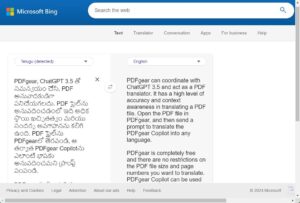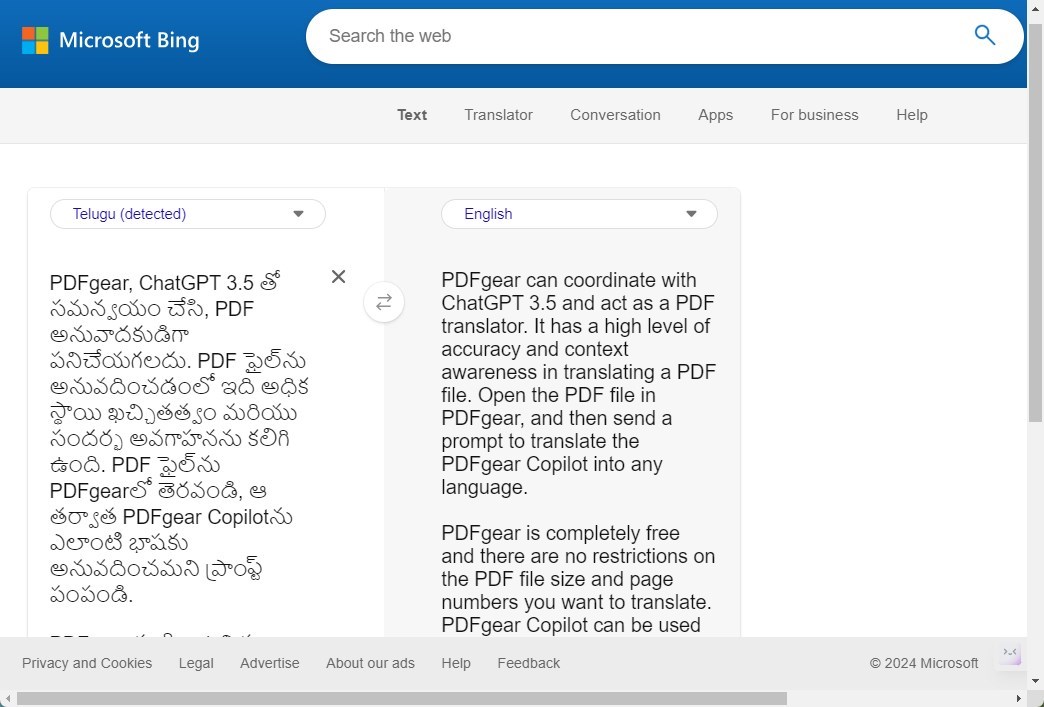Telugu to English translate can seem challenging, but it’s manageable with the right approach. If you need to translate text or speech from Telugu to English, understanding the basics of both languages is crucial. Knowing how sentences are structured and what common phrases mean helps make your translations clearer and more accurate.
In this blog post, we’ll share simple tips to help you with Telugu to English translation. From using helpful tools to understanding key language differences, you’ll find practical advice to improve your translation skills and communicate effectively.
Basics of Telugu to English Translate: What You Need to Know
Understanding how to translate Ttelugu to english translate more than just swapping words. Telugu and English have different grammar rules and sentence structures, which can affect how translations are understood. Knowing these differences is important for accurate translation.
When translating from Telugu to English, start by learning the basic grammar and sentence patterns of both languages. Telugu uses different sentence structures compared to English, so understanding these helps in creating accurate translations. Familiarize yourself with common phrases and idioms in Telugu, as these often do not translate directly and need special attention.
Key Points to Consider
- Grammar Differences: Telugu sentence structure can differ significantly from English.
- Common Phrases: Many Telugu phrases have unique meanings that require thoughtful translation.
Top Tools for Efficient Telugu to English Translation
Using the right tools can make translating Telugu to English much easier. Various online tools and apps are available to assist with this task. Choosing effective tools helps ensure that translations are accurate and reliable.
Popular tools include Google Translate and Microsoft Translator, which offer translation services for Telugu and English. These tools can quickly translate text and help you understand the basic meaning. However, they may not always capture the full context or cultural nuances, so it’s important to review and refine translations as needed.
Recommended Tools
- Google Translate: Good for quick, general translations and available for many languages.
- Microsoft Translator: Offers text and voice translation, which is useful for learning and communication.
Common Pitfalls in Telugu to English Translation and How to Avoid Them
When translating Telugu to English, some common mistakes can occur. These include misinterpreting idiomatic expressions or not capturing the cultural context. Being aware of these pitfalls helps improve the quality of translations.
One frequent issue is the direct translation of idiomatic phrases, which might not make sense in English. For example, a Telugu idiom might have a figurative meaning that needs to be understood and translated into an equivalent English expression. To avoid these mistakes, always consider the context and seek clarification if unsure.
Tips to Avoid Pitfalls
- Understand Idioms: Learn common Telugu idioms and their English equivalents.
- Check Context: Ensure that translations fit the cultural and contextual meaning.
Essential Telugu Phrases for Accurate English Translation
Learning key Telugu phrases can greatly enhance your translation skills. These phrases are commonly used in everyday conversations and can help you understand and translate text more effectively. Knowing these basics allows for smoother and more accurate translations.
Start with simple phrases and gradually learn more complex ones. For instance, phrases like “Namaste” (Hello) and “Dhanyavaad” (Thank you) are fundamental and useful. Understanding these phrases helps in accurately conveying the intended meaning in English.
Useful Telugu Phrases
- “Namaste” – “Hello”
- “Dhanyavaad” – “Thank you”
- “Kripaya” – “Please”
How Cultural Context Influences Telugu to English Translation
Cultural context plays a big role in translating Telugu to English. Words and phrases in Telugu may carry specific cultural meanings that are not immediately clear when translated directly into English. Understanding these cultural nuances helps in creating more accurate translations.
Cultural context can affect how certain words or phrases are interpreted. For example, a term used in a traditional Telugu festival might have significance that’s not obvious in English. Being aware of these cultural factors helps in choosing the right words and phrases for translation.
Understanding Cultural Impact
- Cultural Nuances: Recognize that some Telugu expressions have cultural meanings.
- Contextual Sensitivity: Ensure translations reflect the intended cultural significance.
Practical Tips for Improving Your Telugu to English Translation Skills
Improving your skills in Telugu to English translation involves practice and learning. Regular practice helps you get better at translating various types of text and understanding both languages more deeply.
Try practicing with different types of texts, from simple sentences to complex paragraphs. Use language learning apps and resources to enhance your understanding of Telugu. Working with native speakers can also provide valuable feedback and help refine your translation skills.
Effective Practice Strategies
- Daily Practice: Translate a few sentences each day to build skill.
- Language Apps: Use apps to learn new phrases and practice translation.
- Native Speakers: Engage with native speakers for feedback and improvement.
The Impact of Technology on Telugu to English Translation
Technology has greatly improved the way we translate telugu to english translate. Tools and apps have made it easier to translate text and communicate across languages. These advancements can help streamline the translation process and enhance accuracy.
Translation software and apps offer features like real-time translation and voice recognition. While these tools are helpful, they are not perfect and should be used in conjunction with other translation methods. Regularly updating and refining these tools ensures better translation outcomes.
Technological Advancements
- Translation Apps: Provide instant translations and are useful for quick tasks.
- Voice Recognition: Allows for translating spoken Telugu into English in real-time.
These sections provide a comprehensive overview of translating from Telugu to English, covering essential aspects and practical tips to enhance your translation skills.
Conclusion
In conclusion, translating from Telugu to English requires a solid understanding of both languages’ unique features. By learning the grammar rules, common phrases, and cultural nuances of Telugu, you can produce more accurate and meaningful translations. Remember, the tools and apps available can aid in this process, but they may not always capture the subtleties of the language. Therefore, combining these tools with practical practice and cultural awareness will lead to the best results.
Improving your translation skills is a continuous journey. Regular practice with various texts, using language learning apps, and interacting with native speakers are all effective strategies. Embrace these methods to enhance your proficiency in Telugu to English translation and achieve better communication and understanding across languages.
FAQs
Q: What is the best tool for Telugu to English translation?
A: Google Translate and Microsoft Translator are popular tools for quick and general translations. They help with basic understanding but may need refinement for accuracy.
Q: How can I avoid common translation mistakes?
A: To avoid mistakes, learn common Telugu idioms and understand their English equivalents. Always consider the context to ensure accurate translations.
Q: What are some essential Telugu phrases to know?
A: Important phrases include “Namaste” (Hello), “Dhanyavaad” (Thank you), and “Kripaya” (Please). These are useful in everyday conversations and translations.
Q: How does cultural context affect translation?
A: Cultural context can change the meaning of words and phrases. Understanding the cultural background helps in choosing the right words and conveying the intended meaning.
Q: How can I improve my Telugu to English translation skills?
A: Practice daily, use language learning apps, and engage with native speakers. These methods will help you improve your translation accuracy and language understanding.
Conclusion
translating from Telugu to English requires a solid understanding of both languages’ unique features. By learning the grammar rules, common phrases, and cultural nuances of Telugu, you can produce more accurate and meaningful translations. Remember, the tools and apps available can aid in this process, but they may not always capture the subtleties of the language. Therefore, combining these tools with practical practice and cultural awareness will lead to the best results.
Improving your translation skills is a continuous journey. Regular practice with various texts, using language learning apps, and interacting with native speakers are all effective strategies. Embrace these methods to enhance your proficiency in Telugu to English translation and achieve better communication and understanding across languages.
FAQs
Q: What is the best tool for Telugu to English translation?
A: Google Translate and Microsoft Translator are popular tools for quick and general translations. They help with basic understanding but may need refinement for accuracy.
Q: How can I avoid common translation mistakes?
A: To avoid mistakes, learn common Telugu idioms and understand their English equivalents. Always consider the context to ensure accurate translations.
Q: What are some essential Telugu phrases to know?
A: Important phrases include “Namaste” (Hello), “Dhanyavaad” (Thank you), and “Kripaya” (Please). These are useful in everyday conversations and translations.
Q: How does cultural context affect translation?
A: Cultural context can change the meaning of words and phrases. Understanding the cultural background helps in choosing the right words and conveying the intended meaning.
Q: How can I improve my Telugu to English translation skills?
A: Practice daily, use language learning apps, and engage with native speakers. These methods will help you improve your translation accuracy and language understanding.









